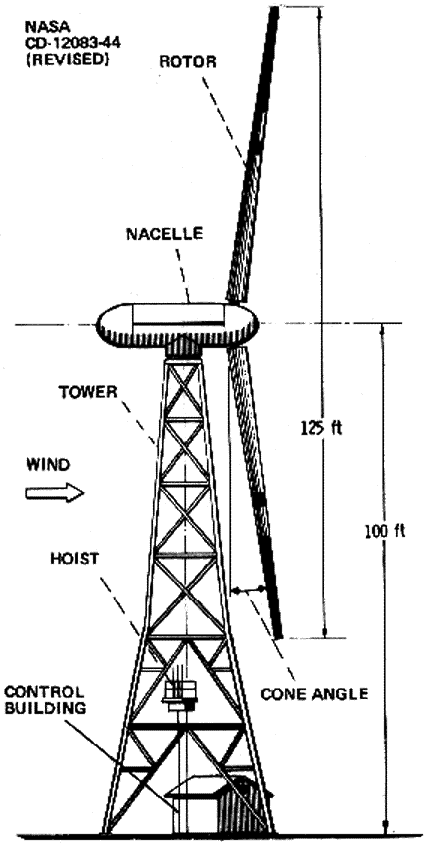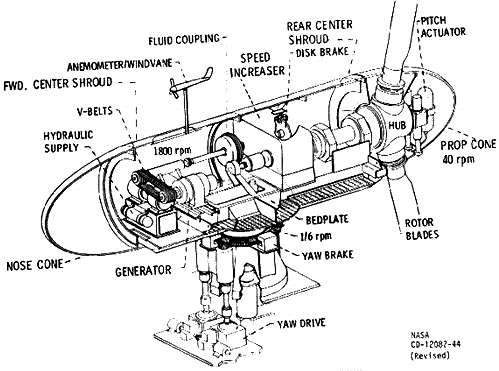



This
windmill was developed by NASA and the Department of Energy in the 1970's in response
to the energy crisis.
It is 162 feet high to the tip of the blades.
It produces
200 kilowatts of electricity at 440 volts.


The
moving wind turns the rotor blades, which in turn move the hub.
The
pitch actuator periodically adjusts the pitch angle of the
rotor blades
so that their rotation does not exceed 40 rpm.
The cone angle is something
different. This is so the blades do
not hit the tower as they pass. It
also promotes yaw stability.
The turning of the hub is transferred to a
speed increaser via a shaft.
The speed increaser is a gearbox which
increases the speed of rotation
by 48-to-1 to 1800 rpm. A high speed shaft exits
the gear box into a
fluid coupling which acts to smooth out any fluctuations
in the
rotational speed. Rotation is transferred via v-belts to
a 200
kilowatt generator. From this electricity is produced.
All this is
mounted on the bedplate.
The wind direction is sensed by the anemometer/windvane.
The
yaw drive acts to position the nose cone of the nacelle
into
the wind. This is because this windmill is a down-wind machine.
When the anemometer/windvane
indicates the windmill is oriented properly,
the yaw brake locks the windmill
into position.
When the wind changes direction, it releases and repeats the process.




Return
to: www.mathematical.com











